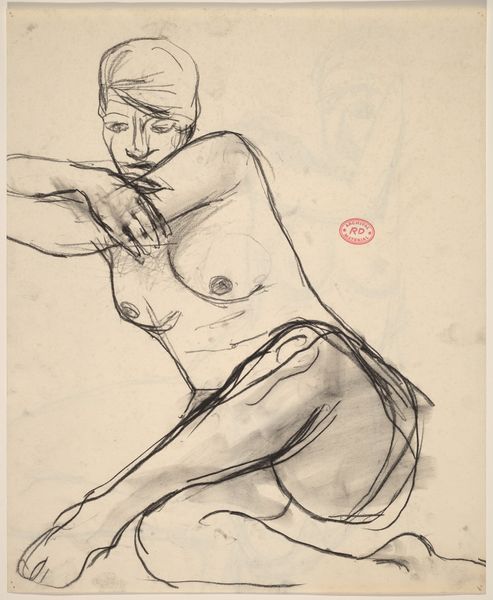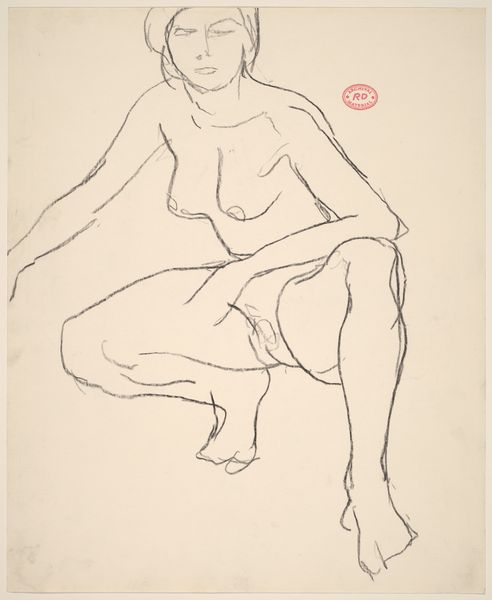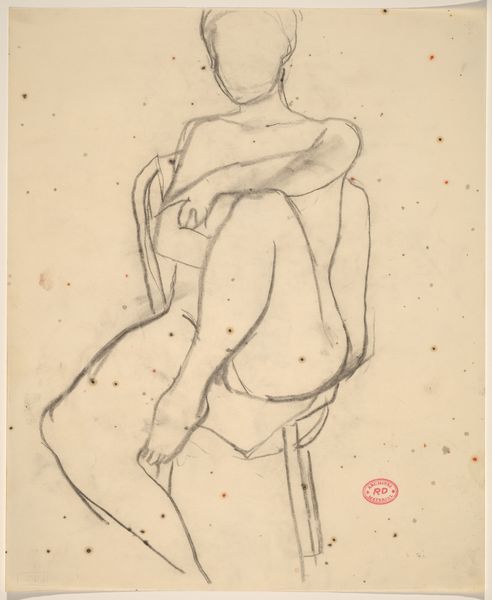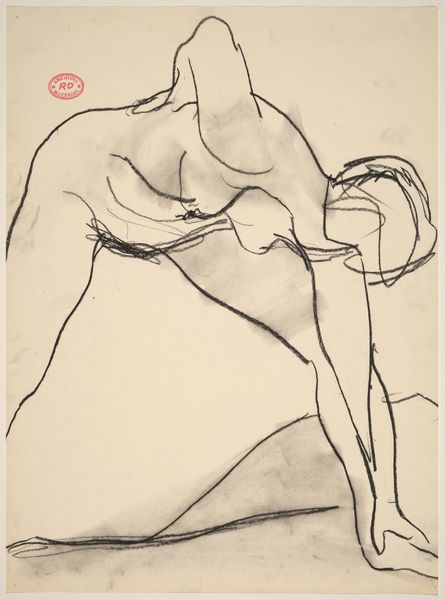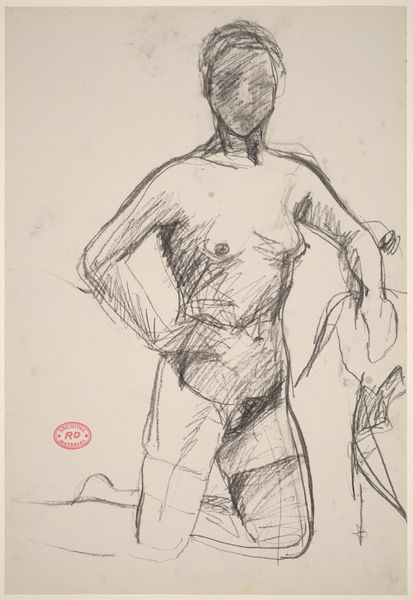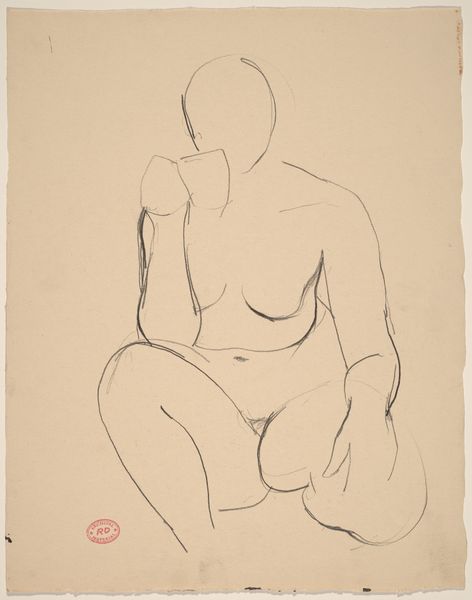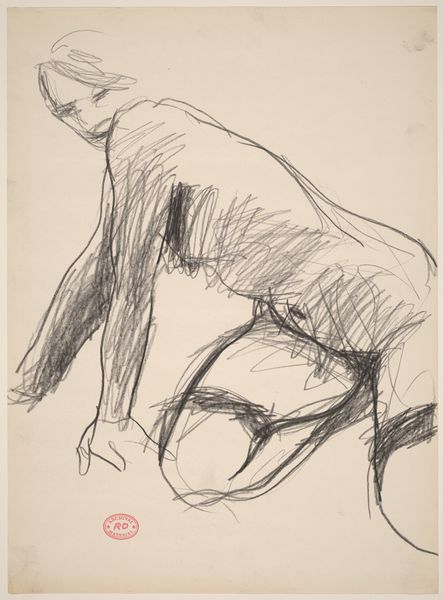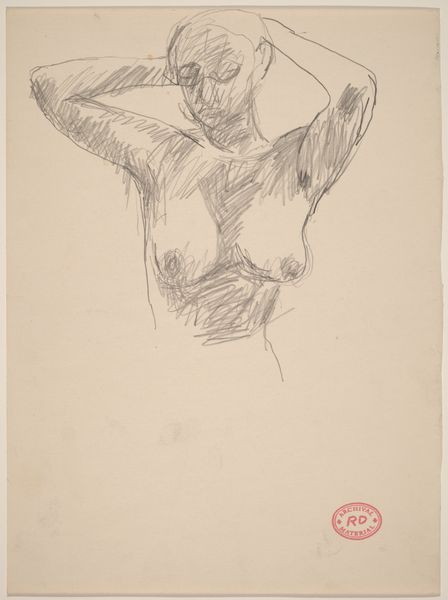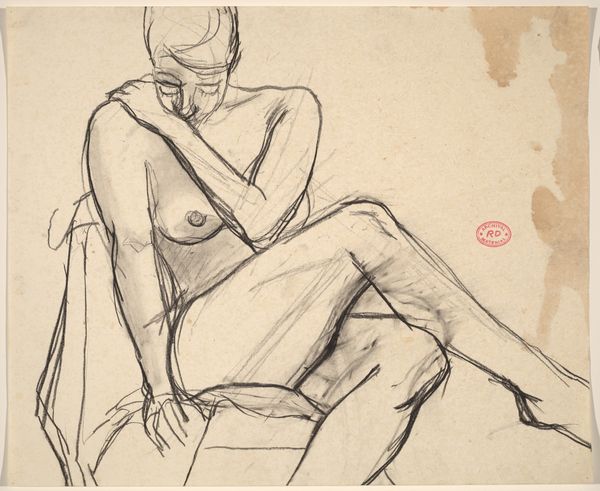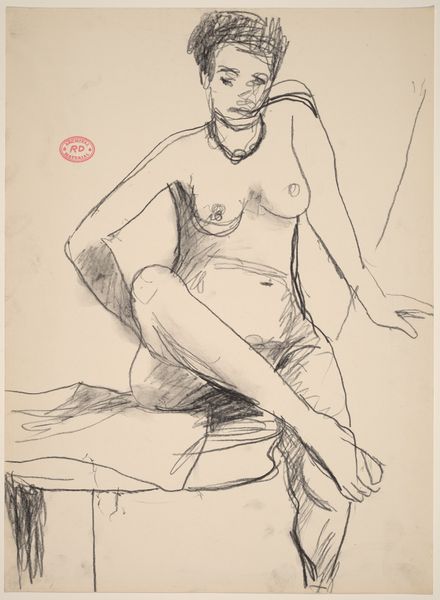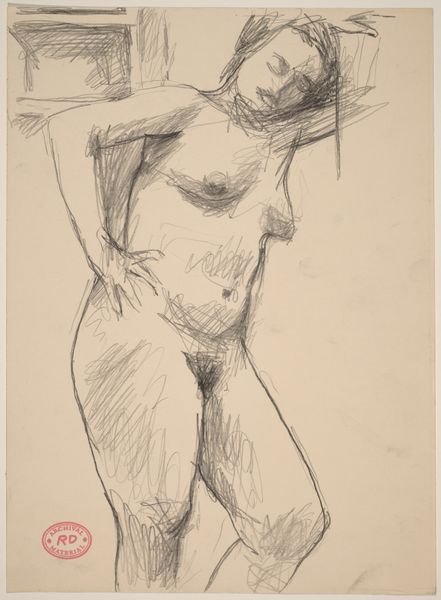![Untitled [seated nude covered across her thighs] by Richard Diebenkorn](/_next/image?url=https%3A%2F%2Fd2w8kbdekdi1gv.cloudfront.net%2FeyJidWNrZXQiOiAiYXJ0ZXJhLWltYWdlcy1idWNrZXQiLCAia2V5IjogImFydHdvcmtzLzYzMmMzZDBjLWZmMmQtNDUzZC04MjY4LTdjNTdlOTZiYmYwOS82MzJjM2QwYy1mZjJkLTQ1M2QtODI2OC03YzU3ZTk2YmJmMDlfZnVsbC5qcGciLCAiZWRpdHMiOiB7InJlc2l6ZSI6IHsid2lkdGgiOiAxOTIwLCAiaGVpZ2h0IjogMTkyMCwgImZpdCI6ICJpbnNpZGUifX19&w=3840&q=75)
Untitled [seated nude covered across her thighs] 1955 - 1967
0:00
0:00
drawing, pencil
#
portrait
#
drawing
#
figuration
#
bay-area-figurative-movement
#
pencil
#
nude
Dimensions: overall: 43.2 x 35.2 cm (17 x 13 7/8 in.)
Copyright: National Gallery of Art: CC0 1.0
Curator: This intriguing sketch is simply titled "Untitled [seated nude covered across her thighs]", by Richard Diebenkorn, dating to sometime between 1955 and 1967. It's a pencil drawing. Editor: Hmm. Immediately, it strikes me as melancholic, almost burdened. The figure's pose and the weight of those charcoal lines—they just speak of a quiet sorrow. What do you see? Curator: The economy of line is remarkable. Diebenkorn's reduction to essential form demonstrates a command of visual language. He articulates mass and volume using an elegant scaffolding of marks. There's an adherence to realist principles even amidst visible abstraction. Editor: I see what you mean, the skeletal foundation. Yet it also feels very raw, like a fleeting thought captured directly from the artist’s mind, with very few details to speak of. The shadow, those smeared patches, amplify that dreamlike quality. They even look like tears. Curator: One could read the absence of detail as a formal decision. By not fully resolving the figure's features, Diebenkorn allows viewers to engage in constructing meaning. Semiotically, it functions as a floating signifier. The figure then represents universal experience rather than specific identity. Editor: I'm all for symbolism, but doesn't that feel a little academic here? Maybe he was simply trying to depict this human being who was weary after a long session. This may be because of how Diebenkorn has decided to represent her shoulders as well. They do slouch forward. I reckon he found beauty in the everyday posture and mundane gestures, perhaps. Curator: Precisely. This reflects a sophisticated artistic understanding. And her very downcast expression. The geometric tension creates emotional dissonance as well: horizontality versus diagonality of form. Editor: In a strange way, her melancholy also speaks of quiet strength. Curator: Ultimately, Diebenkorn utilizes constraint, and simplicity in its form, as strategies that enhance aesthetic meaning. Editor: I agree. Maybe he, too, was looking to translate something as complex as melancholy with only but a few tools in hand, yet making sure it landed just right.
Comments
No comments
Be the first to comment and join the conversation on the ultimate creative platform.
